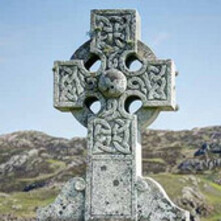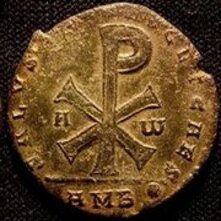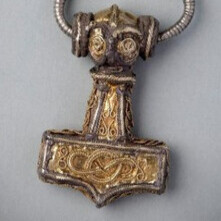



Why choose to compare 1 Christianity with Norse paganism? Firstly, Norse paganism is a reasonable proxy to Germanic paganism, which was widely practiced across Europe. Secondly, as the mythological ecosystem in Europe came to be dominated by a single religion, namely Christianity, Norse paganism disappeared. Thirdly, I currently happen to be interested in Viking culture, and the Vikings were Norse.
Pagan
Christianity.
Christianity is considered by many to be a monotheistic religion,
alongside Judaism and Islam. This is not surprising. All
three religions share a common heritage. And all three emerged from
the Mediterranean Near East during the classical antiquity period.2
After gaining traction in the Greco-Roman world during
middle classical antiquity, Christianity spread across
Europe and the Americas. Along the way, it supplanted
regional forms of pagan
worship.3
By the end of the Middle Ages, all of Europe had been
Christianised.
One of the last forms of Germanic paganism in Europe to succumb to Christianity was Norse paganism. It was practiced in Scandinavian northern Europe. It is a polytheistic belief system. A pantheon of gods occupy metaphysical realms. The gods act capriciously, and interact with humans in relation to the gods' humanlike attributes. The gods expect human fealty and acts of propitiation such as animal and human sacrifices.
Shared pagan themes.
At first glance, Christianity and Norse paganism appear
to have little in common. Christianity's monotheism
conflicts with Norse paganism's polytheism. The
rules of engagement
between the gods and
people are different. And the respective cosmologies
depict incompatible world sagas.
But is this lack of commonality really so? Is Christianity strictly a monotheistic religion? No. And are there pagan elements both within the Christian worldview, and in the actions of its adherents? Yes. In support of these assertions, I identify six themes which are common between the two religions. These are as follows:
The gods seem at once to be identified with, and yet separate from the realms they inhabit. For example, the gods Odin, Vili and Vé killed the primordial being, Ymir. And from its body parts, the natural world was formed. This relation between god and realm resembles Christianity's implicit dualism.
spiritual) realm in which angels and demons reside. Although it's not clear whether this spiritual realm exists separately from Heaven and Hell, the Bible is clear about the existence of angels and demons, and that they participate in influencing human affairs.
The Son
came downinto the physical realm to fulfill his eschatological mission. And he then left by
ascendinginto the realm whence he came, possibly Heaven.
Reality is profoundly dual: God(s) vs Creation, Heaven and Hell vs earth and humanity, human spirit and soul vs body and mind, trascendant vs immanent existences.
Adherents to Norse mythology anticipate an afterlife that is much better than the present life.
End Timeswill be initiated by the Son's return to Earth as his Second Coming. Satan will finally be defeated, consigned to Hell, heralding a new world order.
Christians anticipate going to Heaven after their death. Heaven will be a state of eternal bliss for those few humans who manage to reach it, far better than this life.
The appeal to pagans. Most religions enjoy periods of growth, followed by decline. For nascent Christianity, in particular, its growth was spurred by: 1. the disruption of conventional ways of life brought about by a rich ethnic, cultural and ideological heterogeneity in the Near East; 2. the decentralisation of Judaism arising from the political clash between Jewish nationalism and Roman imperialism; and 3. the appeal of Jesus to both Jewish monotheistic and gentile pagan sensibilities alike, albeit for subtly different reasons.
Christianity offered the Near East pagans a Jewish messianic figurehead and a personalised triune deity, which bore some resemblance to their respective local pagan deities and demigods. The new Christian message softened the hard austerity of the lonely Jewish deity, infusing it with humanlike personalities, kinship and physical body. Early Christianity was therefore a sort of ideological midpoint between strict Jewish monotheism and Greek, Roman, Parthian and Egyptian paganism. It is this ideological context which made the early Christian Jewish message seem appealing, and therefore helped it to spread.
Indeed, these same three drivers were present in the ensuing centuries, spurring the spread of Christianity throughout Europe. To be sure, the political expansion of the Christianised Roman Empire before its decline in the 5th century ce was a strong driver. Nevertheless, similarities between Norse paganism—and by extension, Germanic paganism—and Christian cosmology and eschatology provided additional impetus to Christianity's expansion into pre-Christian Europe.
In closing. Why do many of us we believe what we believe? Did we choose objectively? Or freely? Perhaps not. For it seems clear that the vicissitudes of history, the happenstance of our context, and the inflections of our beliefs relative to those of others, are all more powerful forgers of belief than are doctrinal integrity and the rigour of personal exegesis.

Download PDF norse-vs-christian.pdf (229 KB)